In today’s fast-paced business environment, efficient warehouse storage is crucial for optimizing space and improving operational efficiency.
Pallet racking systems are essential for organizing and storing materials in warehouses, distribution centers, and manufacturing facilities. Understanding the different types of pallet racking systems can help you select the best option for your needs. Let’s explore the most common types of pallet racking systems and their benefits.
Selective pallet racking is the most common, versatile, and economical racking system used in warehouses across various industries. This system is designed to allow direct access to every pallet, which is stored on horizontal beams.
The straightforward structure makes it easy to install and reconfigure according to changing storage needs. Selective pallet rack can be compatible with essentially any type of fork lift, it just requires the appropriate aisle width. This elasticity makes it a popular choice for many warehouses.

Drive-in and drive-through racking systems are designed to maximize storage density by minimizing the number of aisles required in a warehouse. These systems are particularly useful for storing large quantities of similar products, such as bulk goods.
Drive-in racking allows forklifts to enter from one side to pick up or deposit pallets, making it suitable for Last-In-First-Out (LIFO) inventory systems. In contrast, drive-through racking enables forklifts to access pallets from both sides, supporting a First-In-First-Out (FIFO) system. This racking type is built to handle high-density storage needs, ensuring optimal use of space and enhancing operational efficiency.
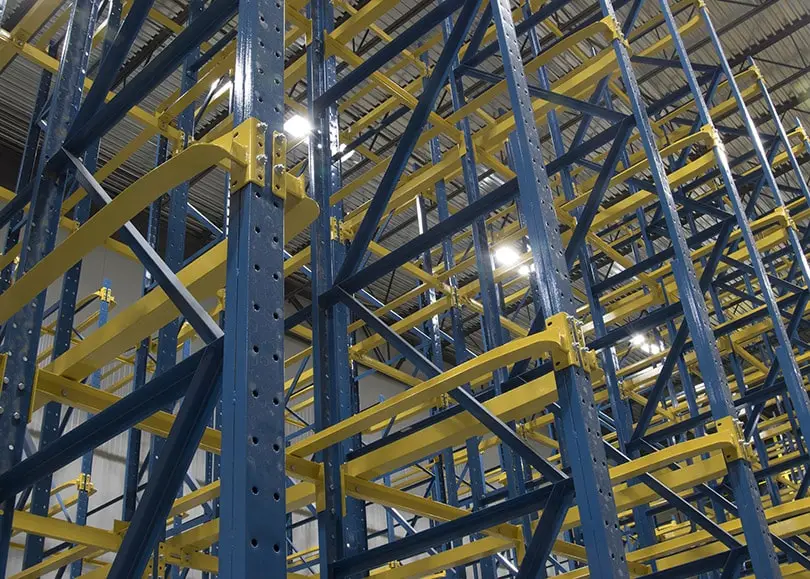
Push-back racking is an advanced storage solution designed for high-density storage environments. It operates on a dynamic system of carts on inclined rails, allowing pallets to be loaded from the front and then pushed back by subsequent pallets.
This type of racking is ideal for warehouses that need to store multiple pallets of the same product while maintaining a relatively high level of accessibility. Push-back racking systems can hold multiple pallets deep, optimizing the use of available space without compromising on access to products. They are particularly beneficial in warehouses where storage density and efficiency are paramount.
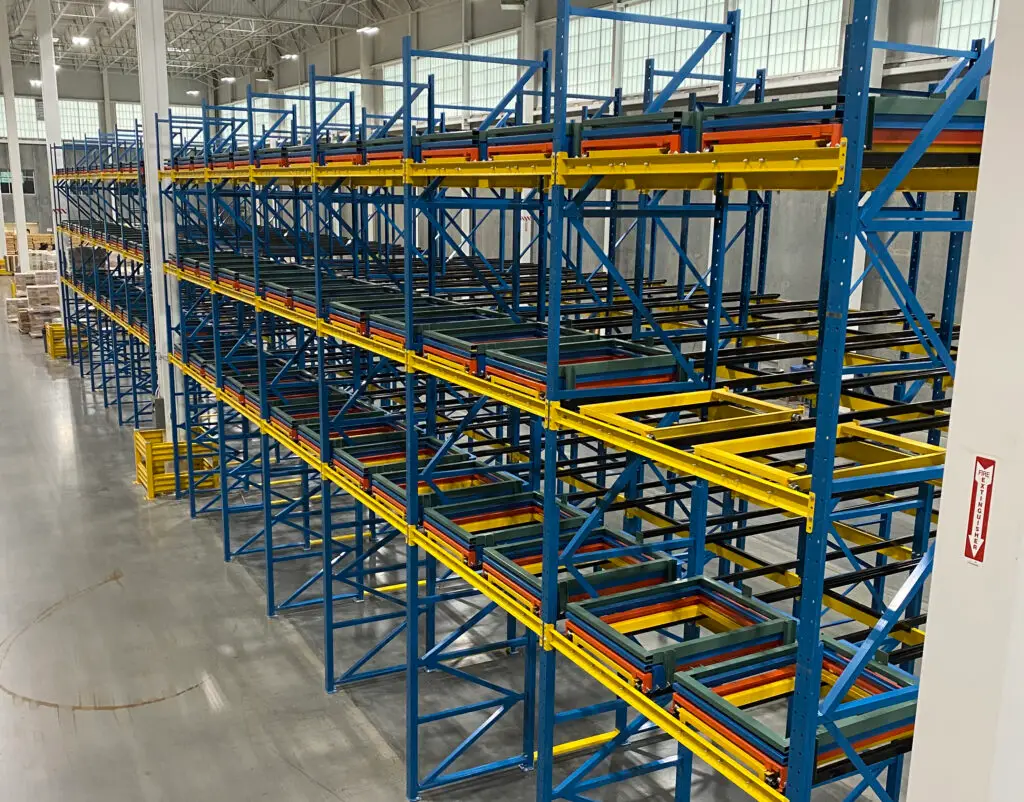
Pallet flow racking, also known as gravity flow racking, utilizes inclined roller tracks to move pallets from the loading end to the picking end. This system leverages gravity to facilitate the movement of pallets, ensuring a smooth and controlled flow of inventory.
Pallet flow racking is ideal for high-turnover storage environments where maintaining product rotation is essential. This system supports First-In-First-Out (FIFO) inventory management, making it particularly suitable for perishable goods and items with expiration dates.
The design of pallet flow racking maximizes storage density while providing easy access to products, ensuring efficient space utilization and streamlined operations.
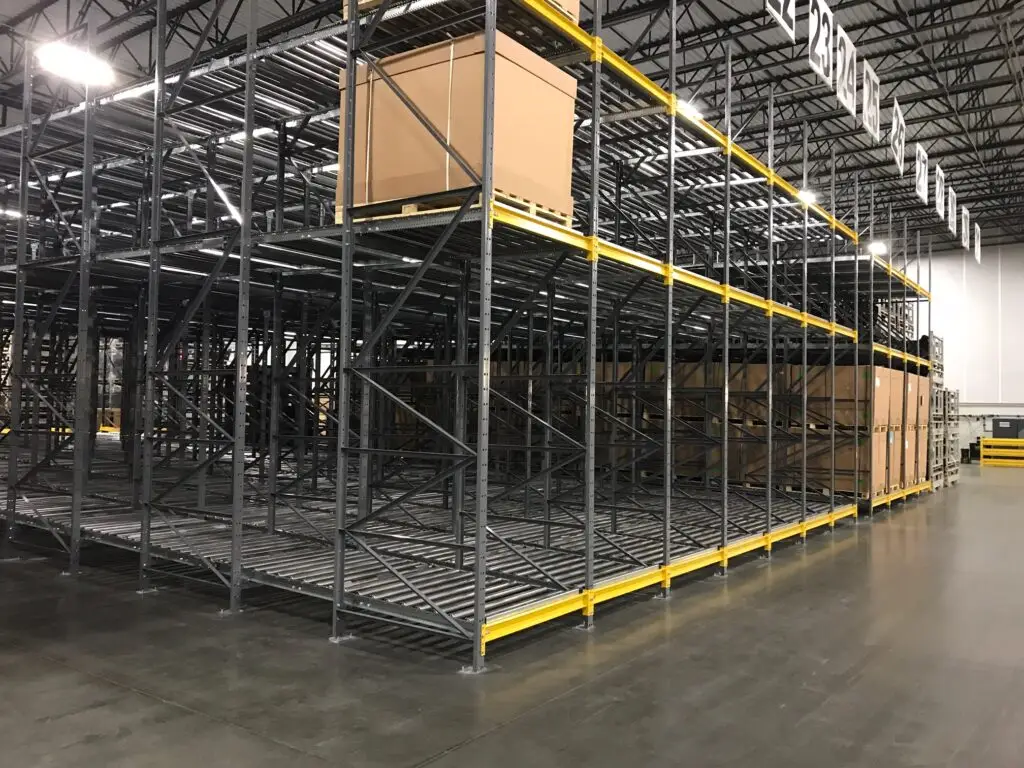
Mobile racking systems are an innovative storage solution designed to maximize storage capacity by eliminating the need for multiple static aisles. These systems are mounted on mobile bases that move along tracks, allowing the racking units to be compacted together when access is not required.
When needed, the aisles can be opened up to provide access to specific pallets. Mobile racking systems are highly efficient and are particularly beneficial in environments where space is at a premium. This type of racking is ideal for businesses looking to significantly increase their storage capacity without expanding their warehouse footprint.
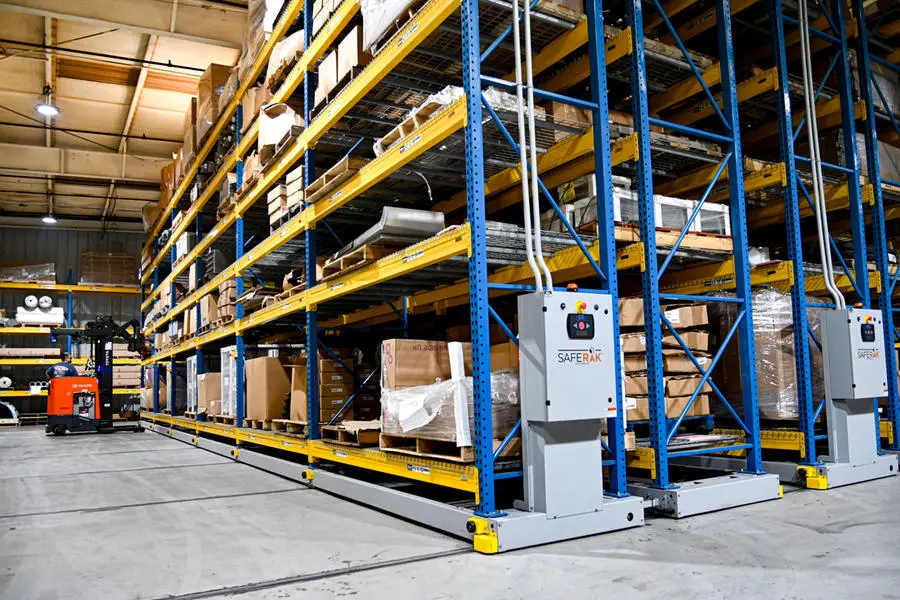
Pallet shuttle systems are a cutting-edge automated storage solution designed to maximize warehouse efficiency and storage density. This system utilizes a lithium-ion battery powered shuttle that moves along rails within the racking structure to load and unload pallets.
The pallet shuttle system is ideal for high-density storage environments where large volumes of goods need to be stored and retrieved quickly and accurately. It significantly reduces the need for manual handling, enhancing operational efficiency and safety.
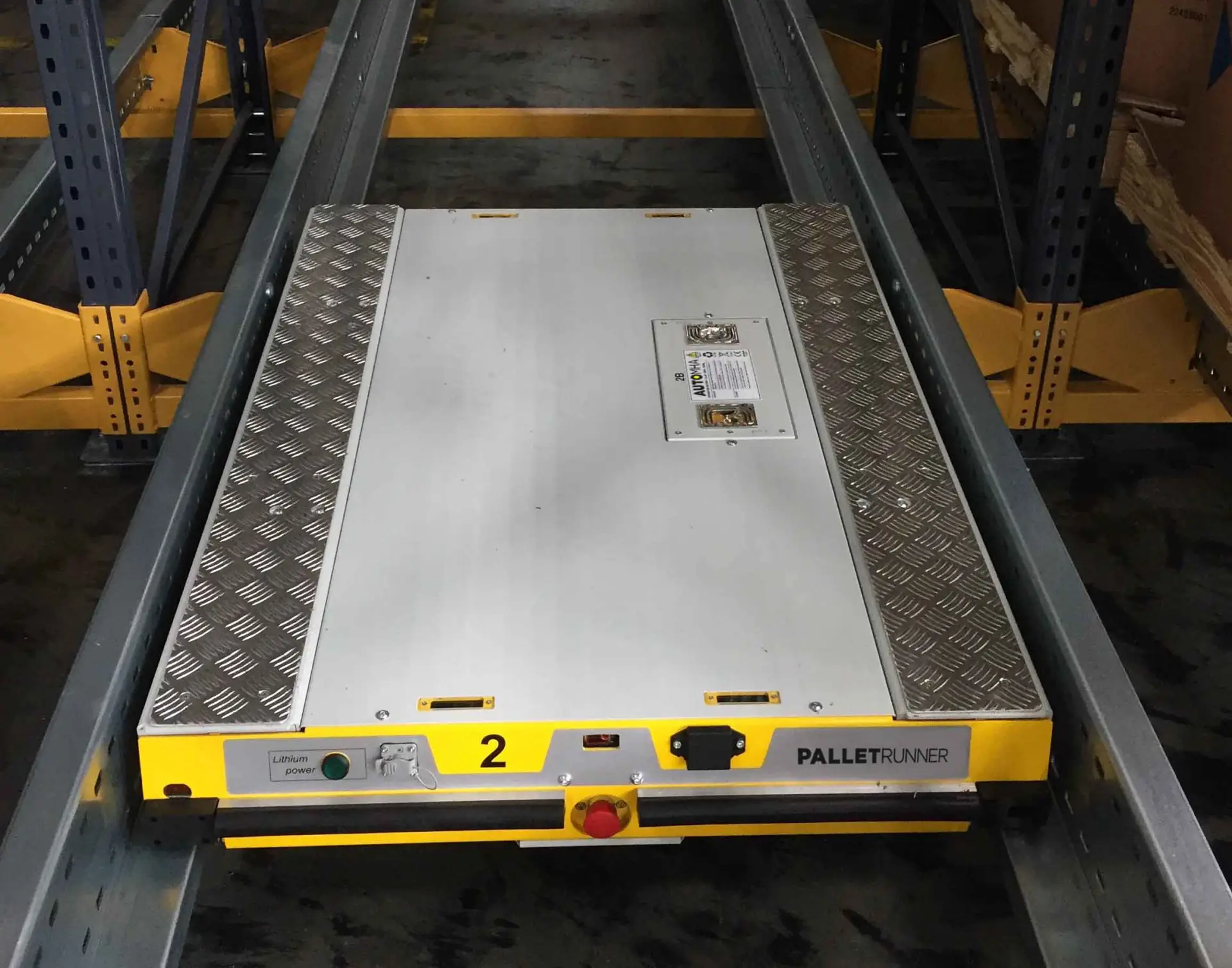
Choosing the right pallet racking system depends on various factors including the type of product stored, inventory management requirements, available warehouse space, and material handling equipment availability. By understanding the benefits and applications of each type of pallet racking system, you can make an informed decision that optimizes your warehouse storage and improves overall efficiency.
At Prestige, we specialize in providing tailored storage solutions to meet your specific needs. Our expertise in pallet racking systems ensures that you receive the best possible solution for your warehouse. Contact us today to learn more about our pallet racking systems and how we can help you optimize your warehouse operations.
Explore our projects, offerings, and company / industry news
Free shipping is available for online orders shipped to facilities within a 25-mile radius of Chattanooga, TN.